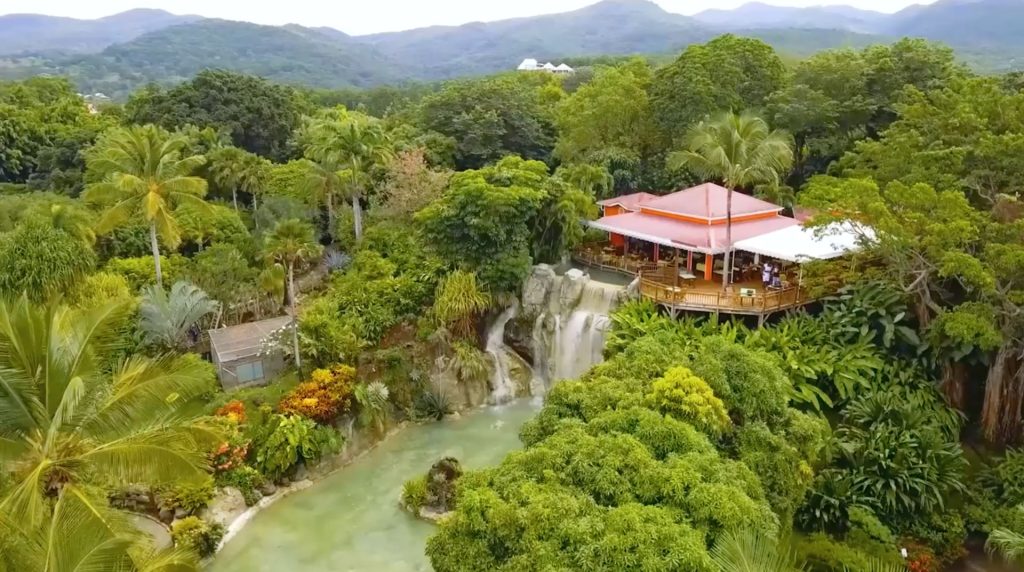
The different worlds
The world of tropical Asia
The Botanical Garden opens onto a large sunny pond where aquatic plants, papyrus and Japanese Koi carp bathe. There are both water lilies, which are the real water lilies, and nelumbo, the sacred plants also known as the lotus.
The stagnant waters of the pond form a veritable aquatic garden, as much by the plants floating on the surface, as by the vegetation of the banks and the landscape which is reflected in it.
The world of explorers
When the West Indian shores were discovered at the end of the 15th century, the first explorers were struck by the luxuriance of the islands. Tropical plants fascinated Europe to the point of becoming the subject of inexhaustible enthusiasm on the part of botanists-explorers.
The interest in tropical plants intensified during the 19th century, promoting the exchanges of plants between the different colonized regions of the world. Later, the development of air transport would still facilitate the trip of plants.
The Botanical Garden is a very fine example of this: while it always reserves a place of choice for the endemic vegetation of the West Indies, it is enriched by a collection of astonishing species from all the tropical regions of the world.
The world of palm trees
The palm trees, with their crown of palms in the shape of a fan or a gigantic feather, irresistibly evoke the heat and the holidays in the tropics. They are symbols of life, luck and fertility, because all parts of the plant can be exploited by man. A charming space, which invites you to travel from one continent to another, where each palm evokes the atmosphere of its region of origin.
the arid
Illustrating the heterogeneity of the tropical environment and contrasting with the lush atmosphere of the garden, an arid zone presents a collection of succulent plants combining cacti, euphorbias, agaves. These plants have in common to store water in their trunks and their leaves in anticipation of the dry period. Their leaves, when they exist, are reduced to limit evaporation. They are almost always provided with thorns to protect themselves from herbivores.
The world of tropical trees
A vast meadow opens onto the Caribbean Sea, a meeting place for
some of the most beautiful ornamental trees of tropical origin:
bombax, baobab, jacaranda, breadfruit, calliandra, araucaria.
Two beautiful specimens from the arboretum stand out: a baobab tree
(Adansonia digitata) with a smooth trunk and curiously swollen at its base and
a cheese tree (Ceiba pententra) with a thorny trunk and strange fruits
which, when ripe, open, leaving escape from Kapok.
Also along the route, a few ancestral trees,
miraculously survived by storms and cyclones, are the pride of the Garden.
Three of them are remarkable to the point of having benefited from special emphasis.
Their venerable age allowed them to grow to monumental proportions and to be naturally
designated as the star of the park.
Talipot (Corypha umbraculifera)
Cheesemaker (Ceiba pentandra)
Banyan tree (Ficus benghalensis)
The simple
On the model of medieval monastic gardens, it is the place of cultivation of plants with medicinal virtues also called simple. It is not only the savage “rimèd razié”; there are also cultivated plants for food or condiments (nutraceuticals).
The humid Caribbean
On the island of Basse-Terre, the kingdom of the humid tropical forest begins at an altitude of five hundred meters and reveals its exuberant flora. Due to the permanent humidity, the vegetation proliferates briskly, and species of an infinite variety intermingle, creating a sumptuous decor.
Some trees are “shy” and maintain a certain distance between their highest foliage: this is called “crown shyness”. The leaves at the tops of the shy trees do not intertwine when they approach but reveal a "shyness cleft".
Through this behavior, shy trees allow light to enter the forest through the cracks, and could reduce the transmission of some pests.
This is the case of the majestic Samanea Saman in the Botanical Garden. This species native to South America is otherwise called "rain tree" for its very wide habit and its shape comparable to a parasol.
The humid Caribbean world is also the privileged place to stop at the “wall of water”. At this place, visitors can appreciate the epiphytic plants which are numerous


